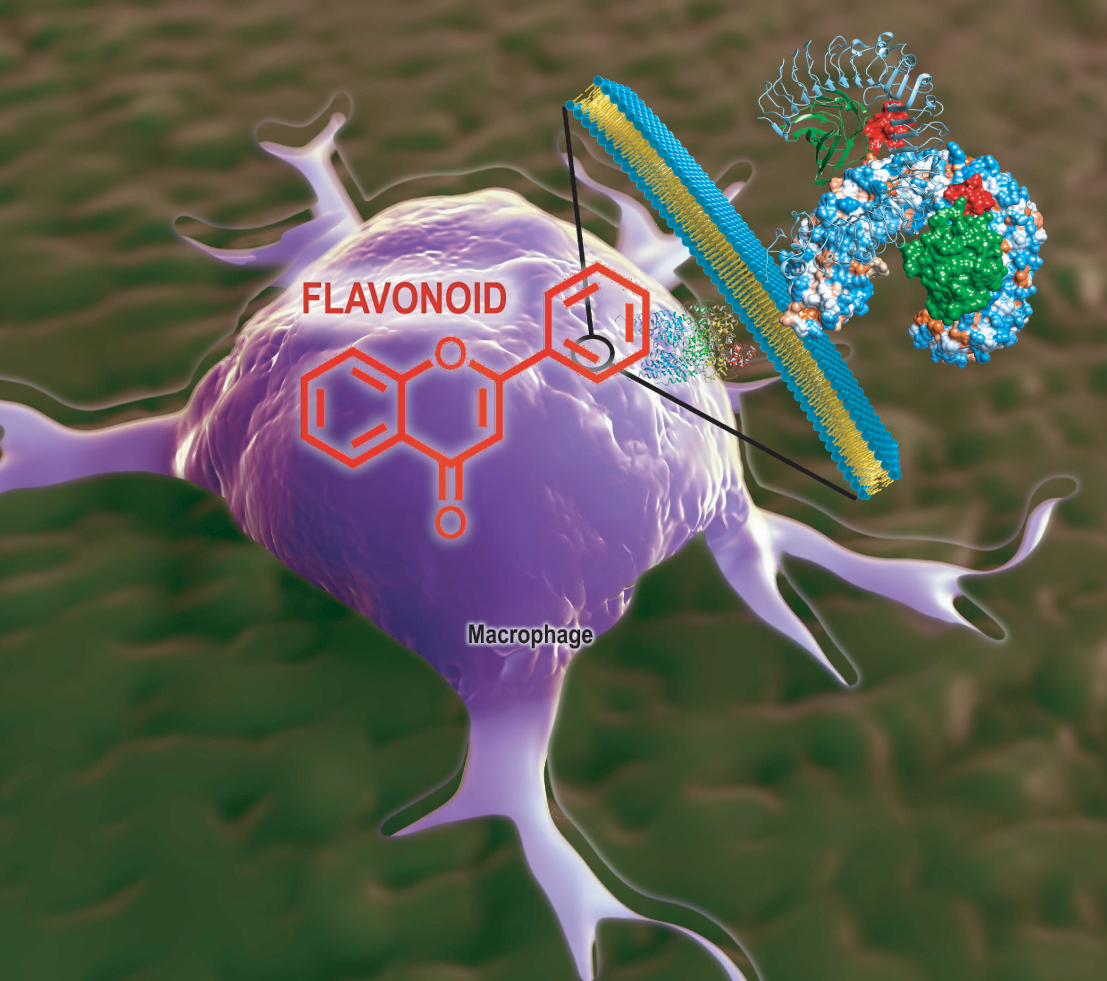Abstract
Targeting lipopolysaccharide (LPS)/toll-like receptor 4 signaling in mononuclear phagocytes has been explored for the treatment of inflammation and inflammation-related disorders. However, only a few key targets have been translated into clinical applications. Flavonoids, a class of ubiquitous plant secondary metabolites, possess a privileged scaffold which serves as a valuable template for designing pharmacologically active compounds directed against diseases with inflammatory components. This perspective provides a general overview of the diversity of flavonoids and their multifaceted mechanisms that interfere with LPS-induced signaling in monocytes and macrophages. Focus is placed on flavonoids targeting MD-2, IκB kinases, c-Jun N-terminal kinases, extracellular signal-regulated kinase, p38 MAPK and PI3K/Akt or modulating LPS-related gene expression.
Graphical abstract

Supplementary data
To view the supplementary data that accompany this paper please visit the journal website at: www.future-science.com/doi/suppl/10.4155/fmc-2023-0174
Acknowledgments
The authors thank the librarians at the International Islamic University Malaysia, the University of Malaya and Universiti Kebangsaan Malaysia for their assistance in accessing relevant literature.
Financial disclosure
This work was supported by the Ministry of Higher Education Malaysia through the Fundamental Research Grant Scheme (FRGS/1/2022/STG04/UIAM/02/2) and the International Islamic University of Malaysia under the Research Management Centre Grant 2020 (RMCG20-008-0008). The authors have no other relevant affiliations or financial involvement with any organisation or entity with a financial interest in or financial conflict with the subject matter or materials discussed in the manuscript apart from those disclosed.
Competing interests disclosure
The authors have no competing interests or relevant affiliations with any organization or entity with the subject matter or materials discussed in the manuscript. This includes employment, consultancies, honoraria, stock ownership or options, expert testimony, grants or patents received or pending, or royalties.
Writing disclosure
No writing assistance was utilised in the production of this manuscript.
